Located on the Upper West Side, this narrow strip of parkland between the Hudon River and the beautiful buildings on upscale Riverside Drive is underappreciated. The park is dotted with monuments, including some very impressive ones.
The Design of the Park
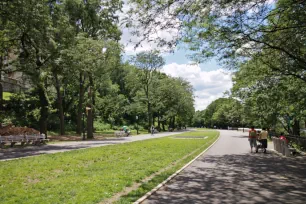
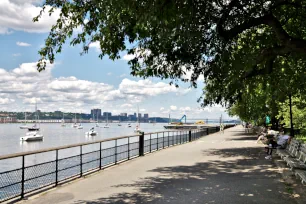
Extending for four miles (six km) from 72nd to 158th Street along the Hudson River, Riverside Park is truly one of the nicest spots in Manhattan. A New York “Designated Scenic Landmark”, the park has long provided respite for those looking to escape the crowds of the city.
Designed in 1873 by Central Park‘s Frederick Law Olmsted, who is responsible for many NY parks, Riverside Park boasts a variety of different landscapes, from colorful flower gardens to rocky precipices.
Originally, the park stretched only to 125th Street. Its construction prompted the building of many mansions along the drive that traversed the park, and soon a number of memorials appeared there as well. Before long, the park was extended an additional 33 blocks, and in the 1930s, it was widened westward with the addition of 148 acres, ball fields, an esplanade, and a marina.
Throughout the next seventy years, other small land additions were made to the park, and its landscape and attractions have been refurbished a number of times, keeping the park in pristine condition for all to enjoy.
Monuments
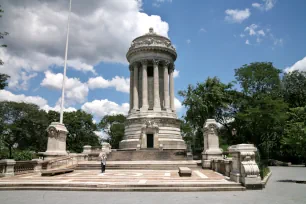
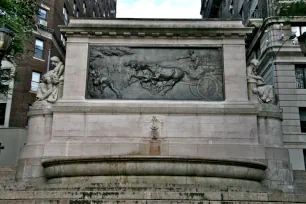
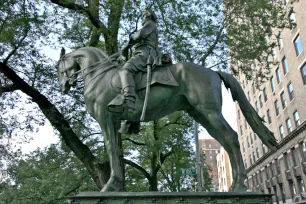
The park is home to quite a few monuments, below a selection of some of the most interesting:
The largest monument in the Riverside Park area by far is Grant’s Tomb, a monumental mausoleum that houses the red granite tombs of Ulysses S. Grant, the 18th President of the United States, and his wife, Julia Grant. The monument, designed by John H. Duncan, was built between 1892 and 1897 near the north side of the park at 122nd Street and to this day remains the largest mausoleum in America.
More to the south, at the site where 100th Street and Riverside Drive meet, stands another interesting monument: the Firemen’s Memorial, which honors firefighters who died while performing their duties. The monument, which was dedicated in 1913, was designed by architect Harold Van Buren Magonigle and consists of a wide flight of stairs leading to a basin that stands in front of what looks like a large pedestal. The front of the pedestal is decorated with a bronze relief that depicts a horse-drawn engine rushing to a fire. On either side of the monument stands an allegorical statue representing «Duty» and «Sacrifice». The marble statues were created by the Italian-born sculptor Attilio Piccirilli.
Another impressive monument is the Soldiers’ and Sailors’ Monument, situated near 89th Street. This white marble monument, designed by Charles and Arthur Stoughton, honors the Union soldiers and sailors that served in the U.S. Civil War. The memorial resembles a Corinthian temple and is ringed by a dozen Corinthian columns. Inscriptions on the building include the names of New York volunteer regiments and the battles in which they served, as well as Union generals.
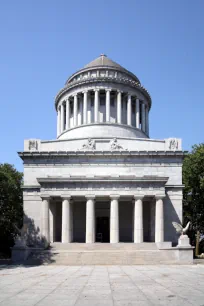
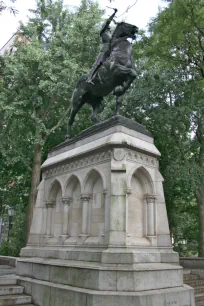
Nearby, close to 93rd Street, stands the Joan of Arc Monument. It shows the French heroine and martyr Joan of Arc astride on a horse, which stands on a large pedestal. The granite pedestal is decorated with blind Gothic windows. The magnificent bronze statue, which rises to a height of over 6 meters (+20ft) was created by the American sculptress Anna Vaughn Hyatt Huntington. It was unveiled here in 1915.
Another equestrian monument in Riverside Park is that of General Franz Sigel. Sigel was a general of German descent who fought in the American Civil War. The bronze statue was created by Karl Bitter – an Austrian-born sculptor – and unveiled in 1907 at the border of Riverside Park at 106th Street.
Lajos Kossuth, governor-president of the Kingdom of Hungary during the revolution of 1848-1849, is honored with a statue showing the statesman on a tall granite pedestal. At the foot of the pedestal are two figures: on the left is a young revolutionary soldier representing the new republic, and on the right is an old man who represents the old regime. The bronze statues were sculpted by John Horvay. The monument – funded by Hungarian immigrants – was dedicated in 1928 on a site bordering Riverside Park, at 113th Street.
Just one block south is another statue, this one honoring Samuel J. Tilden, the 25th governor of New York. It was sculpted by the Paris-born artist William Ordway Partridge and dedicated in 1926, forty years after Tilden’s death. An inscription on the pedestal reads: “I trust the people”, a reference to the presidential election of 1876 where he won the popular vote but lost the election.
A much more recent statue can be found at the southern end of the park, on the corner of 72nd Street and Riverside Drive. This statue honors Eleanor Roosevelt, First Lady of the United States from 1933 to 1945. The statue was sculpted in 1996 by Penelope Jencks, and shows her leaning on a large boulder.
Riverside Park is also home to a beautiful Baroque fountain, named after its donor, Robert Ray Hamilton. The ornate marble fountain has a wide basin that was originally intended as a water trough for horses. Water streams from the mouth of a dolphin into the basin. Above the dolphin is the relief of a coat of arms, and the fountain is surmounted by an eagle with spread wings. The fountain can be found near 76th Street, where it was dedicated in 1906.
91st Street Garden
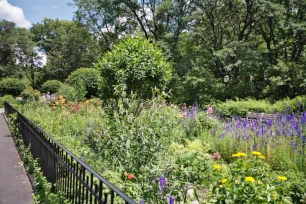
Between 90th and 91st Street, inside the park, sits what has become known as the 91st Street Community Garden. Used as a backdrop in the movie “You’ve Got Mail”, the garden is staffed by volunteer members who are given individual plots to cultivate. Visitors will find a variety of annuals and perennials (depending on season) as well as herbs growing in this garden, which is open to the public from early spring until late autumn.
Recreation
Riverside Park is a favored recreation area for New Yorkers who live or work in the Upper West Side area. A bicycle and skating path extends from 75th to 125th Street, and there are plenty of places to stroll or jog. Abundant recreational areas are also available and free kayak rental is available at the lower tip of the park (hours are limited).

